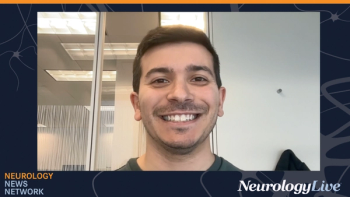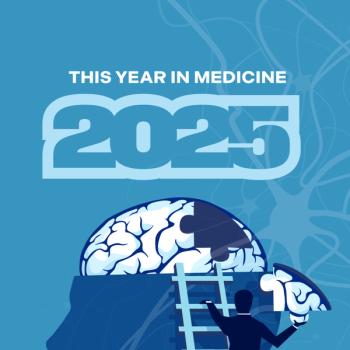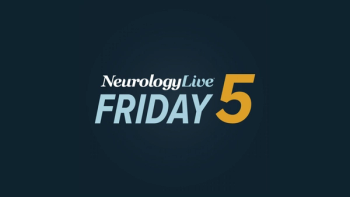
Revisiting the Salem Witch Trials Through a Modern Neurological Lens
Avi Singh Gandh, MD, neurology resident at Emory University School of Medicine, reflected on how modern neurology can help interpret the Salem witch trials.
The Salem witch trials of 1692, which led to the wrongful execution of 20 individuals, remain one of history’s most examined examples of societal misjudgment. The trials were driven by claims of supernatural afflictions and the misinterpretation of behaviors that, in hindsight, may have reflected underlying neurological or psychiatric conditions. A review recently presented at the
Presented by coauthor Avi Singh Gandh, MD, the study reviewed historical and medical literature, analyzing documented accounts of the accused alongside modern neurological criteria. Findings revealed considerable overlap between the behaviors described in 17th-century New England and contemporary clinical presentations, including epilepsy, psychogenic nonepileptic seizures (PNES), functional neurological disorder (FND), and anti-NMDAR encephalitis. The review also highlighted ergot poisoning, a condition caused by consuming contaminated rye, as a possible biological factor contributing to reported hallucinations, while social contagion and mass hysteria may have amplified the community’s fears.
These insights illustrate both the evolution of neurological understanding and the profound consequences of diagnostic error when unexplained symptoms are interpreted through the lens of superstition rather than science. As a way to get in the Halloween spirit, Gandh, a neurology resident at Emory University School of Medicine, sat down to discuss how the historical misinterpretations from the Salem witch trials serve as a cautionary tale for modern neurologists to approach ambiguous symptoms with humility, empathy, and scientific rigor. He explained that advances in diagnostic tools have enabled clinicians to distinguish between overlapping presentations with greater precision.
NeurologyLive: What aspects of the reported symptoms from the Salem witch trials stand out to you as most consistent with recognizable neurological conditions today?
Avi Singh Gandh, MD: When revisiting the Salem witch trials through a neurohistorical lens, several described manifestations like “sudden convulsions, trancelike states, visual or auditory hallucinations, and fluctuating awareness” are strikingly reminiscent of neurological and neuropsychiatric syndromes recognized today. The episodic and stress-sensitive “fits” parallel epileptic seizures and PNES, whereas features such as paranoia, agitation, and confusion are commonly seen as psychiatric manifestations of very real neurological pathologies such as autoimmune encephalitides like anti-NMDAR encephalitis.
The clustering of symptoms in a small community also suggests elements of mass psychogenic illness and social contagion. Additionally, biological factors such as ergot-contaminated rye provide a plausible toxicological explanation for shared hallucinations. Collectively, these patterns reveal that what was once interpreted as supernatural possession or witchcraft can many times be reframed as the clinical expression of organic and functional neurological disease, magnified by the sociocultural context of fear and limited medical understanding in 17th-century New England. Everything else, maybe not? Or more likely, just not as of yet.
How do you think advances in diagnostic tools and clinical awareness have helped us differentiate between overlapping clinical presentations in current practice?
Modern neurology has dramatically transformed how we interpret and manage overlapping neurological and psychiatric symptoms. Technologies like continuous video EEG, advanced neuroimaging, including MRIs (with evolving technology and improved sequences), and [cerebrospinal fluid] antibody testing now allow clinicians to delineate epileptic from psychogenic events and identify autoimmune or infectious causes with much greater precision. Increased awareness of FND and PNES has shifted the focus from dismissal to diagnosis, emphasizing validation and multidisciplinary rehabilitation.
This evolution in clinical reasoning reflects centuries of progress since the Salem era, when subjective observation and superstition guided medical judgment. The modern neurologist integrates objective biomarkers, pattern recognition, and empathy, ensuring that atypical behaviors or unexplained movements are approached as medical phenomena, not moral failures. These diagnostic advances safeguard against the same interpretive errors that led to persecution centuries ago, reaffirming the centrality of evidence-based, compassionate, and culturally informed care.
What lessons can modern neurologists draw from historical misinterpretations when approaching cases with ambiguous neurological symptoms today?
The Salem witch trials stand as a historical allegory of what happens when fear, bias, and incomplete understanding overshadow scientific reasoning. For today’s neurologist, this unfortunate episode underscores the responsibility to approach ambiguous neurological presentations with humility and rigor. In disorders such as FND, encephalitis, or rare seizure syndromes, mislabeling can still occur if clinicians overlook psychosocial influences or prematurely anchor to a single hypothesis. The key lesson is to remain open-minded, collaborative, and guided by evidence rather than assumption.
As we understood seizures truly as aberrant currents in the neural circuits instead of just demonic possession, epilepsy shifted from the realm of the supernatural to psychiatry and finally toward neurology, allowing us to manage them better. Neurology must continue bridging mind and brain, integrating psychiatry, immunology, and social context into holistic patient evaluation. By grounding practice in empathy and data, we avoid repeating history’s tragic misjudgments while transforming mystery into deeper understanding and stigma into science.
Transcript edited for clarity.
REFERENCE
1. Parmar J, Gandh AS, J A, et al. Burned at the stake (of misdiagnosis): the neuro-historical underpinnings of the Salem witch trials. Presented at: 2025 AAN Annual Meeting; April 5-9; San Diego, CA. Poster 11-014.
Newsletter
Keep your finger on the pulse of neurology—subscribe to NeurologyLive for expert interviews, new data, and breakthrough treatment updates.




















